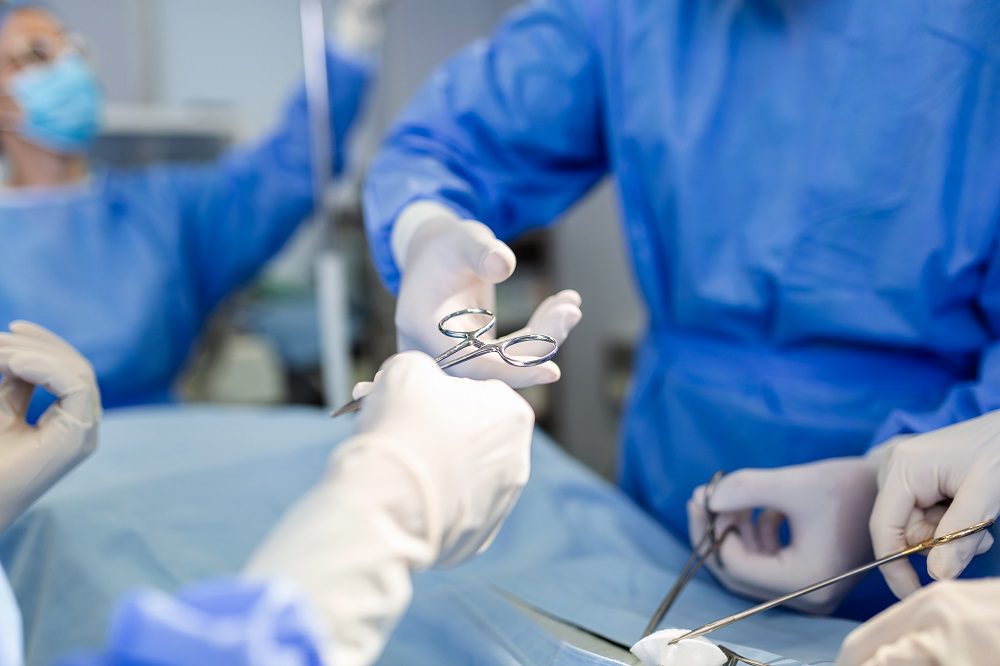Introduction
Orthotopic neobladder is a well-established surgical solution for continent urinary diversion after radical cystectomy. Nevertheless, it still represents a challenging surgery. Some critical issues of orthotopic bladder sub- stitution include relevant complication rates, renal function impairment, urinary incontinence and patient quality of life. A new ileal neobladder technique, Vesuvian Orthotopic Neobladder (VON), performed for the first time in 2020.
Objective
To simplify and speed up the reservoir reconstruction through ten standardized technical steps and obtain an appropriate bladder capacity at the same time.
Patient Characteristics
Patients with non-metastatic muscle-invasive or highrisk non-muscle invasive bladder cancer and fit for bladder substitution, based on age, life expectancy, comorbidities and patient’s preferences, were included in the study. All patients underwent a routine preoperative examination, consisting of chest-abdominal computed tomography and urinary cytology.
All complications associated with the procedure were recorded and categorized according to the Clavien-Dindo score. Retrograde cystography was performed on day 7 and on day 15 prior to removal of urethral catheter if no urine leakage occurred (Figure 7). Bladder volume was evaluated by ultrasound three months after the surgery. Day and night time continence were defined as no pad use.
Table 1. Patient characteristics. Adapted from source.
Table 2. Operative outcomes. Adapted from source.
Surgical Technique
The Vesuvian neobladder was constructed with 36 cm of ileum, isolated about 15-20 cm from the ileoce- cal valve. The neobladder configuration takes shape through 10 steps as described below.
1. Selection of the intestinal loop, isolation of the loop and lateral-lateral anastomosis of the ileum with two 60/80 mm mechanical staplers (Figures 1 and 2).
2. On the loop obtained, two 1.5 cm incisions are made: they are perpendicular to the mesentery at 12 and 24 cm from the right apex of the loop (Figures 2 and 3).
3. The caudal horn is made by the introduction of a 60 mm stapler through the first incision (Figure 3). 4. The left horn is made by inserting a 60 mm stapler through the second incision (Figure 4a).
5. After removing the central part of the metal suture exceeding the intestinal resection (Figure 4b), the afferent and efferent stumps are sutured together with a 60 mm mechanical stapler forming the right lat- eral horn (Figure 4c).
6. A clover structure is obtained with three symmetrical horns.
7. The ureters are cannulated with 8Fr ureter- al catheters. The ureters are placed ipsilaterally to the horns and the uretero-neovesical anastomosis is per- formed in detached 3-0 monofilament stitches with an- ti-reflux technique. Then, ureteral catheters are passed contralaterally through the anterior wall of the neoblad- der(Figure 5).
8. The right ureter is anastomized at the level of the right lateral horn. The left ureter is anastomized similarly at the level of the apex of the left horn, at the site of the incision used for stapler’s introduction. After removing part of the suture made by the stapler on the right lateral horn, an opening of about 2-cm in diame- ter is obtained which is used to make the anastomosis of the ureter with anti-reflux technique: the ureter is spatulated dorsally and fixed to the anterior edge of the opening with three detached 3-0 monofilament stitches. In this way, the length of the ureter is sufficient to cover the entire area. The posterior margin of the opening is fixed to the ureter and the lateral margins are brought together to embrace the ureter with two 3-0 monofil- ament stitches passing through the anterior wall of the ureter (Figures 6a and 6b). The same procedure is re- peated on the left side.
9. The anastomosis with the urethra is per- formed with five detached 2-0 monofilament stitches at the apex of the caudal horn, at the site of the incision used for the stapler using 22 Ch neobladder catheter with 15 cc in the balloon (Figure 6c).
10. Ureteral catheters are passed contralaterally through the abdominal wall to which they are fixed with 2-0 silk stitches. This concludes the packaging for the Vesuvian Ortho- topic Neobladder.
Figure 1. Selection of the intestinal loop, isolation of the loop and lateral-lateral anastomosis of the ileum with 2 mechanical staplers of 60/80 mm.
Figure 2. Selection of the intestinal loop, isolation of the loop and lateral-lateral anastomosis of the ileum with 2 mechanical staplers of 60/80 mm
Figure 3. Two 1.5 cm incisions are made perpendicular to mesentery at 12 and 24 cm from the right apex of the loop.
Figure 4. A 60-mm stapler is introduced through the first incision to make the caudal horn (4a), followed by a second 60-mm stapler through the second incision for the left horn (4b). After removal of the central part of the metal suture exceeding the intestinal resection, the afferent and efferent stumps are sutured together with a 60-mm mechanical stapler forming the right lateral horn (4c).
Figure 5. The ureters are cannulated with 8fr ureteral catheters. The ureters are placed homolaterally to the horns and the uretero-neovesical anastomosis is performed in detached 3-0 monofilament stitches with anti-reflux technique (6a, 6b). Then ureteral catheters were passed contralaterally through the anterior wall of the neobladder. The anastomosis with the urethra is packaged with five detached 2-0 monofilament stitches at the apex of the caudal horn, site of the incision used for the stapler using 22 ch neobladder catheter with 15cc in the balloon (6c).
Figure 6. The ureters are cannulated with 8fr ureteral catheters. The ureters are placed homolaterally to the horns and the uretero-neovesical anastomosis is performed in detached 3-0 monofilament stitches with anti-reflux technique (6a, 6b). Then ureteral catheters were passed contralaterally through the anterior wall of the neobladder. The anastomosis with the urethra is packaged with five detached 2-0 monofilament stitches at the apex of the caudal horn, site of the incision used for the stapler using 22 ch neobladder catheter with 15cc in the balloon (6c).
Figure 7. The cystometric image of the neobladder on day 15.
Results
- Vesuvian Orthotopic Neobladder was performed from December 2020 to July 2021 in 6 male patients with ages ranging from 59.9 to 72.4 years.
- All selected pa- tients enjoyed good health conditions (Charlson comor- bidity index 4-6) and none had previously undergone abdominal surgery.
- One patient presented with T1HG (high grade) and CIS (carcinoma insitu), refractory to intravesical BCG (Bacillus Calmette-Guerin) therapy. Preoperative patient characteristics are listed in Table 1.
- The mean overall operative time was 273.3 (±18.6) minutes. Neobladder reconstruction time ranged from 48 to 80 minutes (average 63.7, ±16.1) [Table 2].
- No intraoperative complications occurred. No complications was encountered in the early postoperative period, such as infection or urinary retention.
- One patient reported urethral anastomosis urine leakage on cystography and he was treated conservatively.
- After 30 days from surgery, the cystography was negative for leakage and then the bladder catheter was removed.
- The bladder volume measured by ultrasound 3 months after the surgery ranged between 250 and 290 ml (mean 272.5, SD 17.1).
- No significant differences were found between preoperative and postoperative 3rd month se- rum creatinine and eGFR values (data not shown).
- All patients, with the exception of two, reported full daytime urinary continence. Nocturnal continence was re- ported by three patients (Table 3).
Table 3. Functional outcomes. Adapted from source.
Conclusion
The new Vesuvian Orthotopical Neobladder technique is a good alternative to traditional orthotopic bladder procedures and offers the advantage of speeding up the procedure, using a shorter bowel length and obtaining a good storage capacity. The ten surgical steps can be considered as a good starting point for additional surgical technique upgrades. More robust data, concerning number of procedures and length of follow-up, are required.

